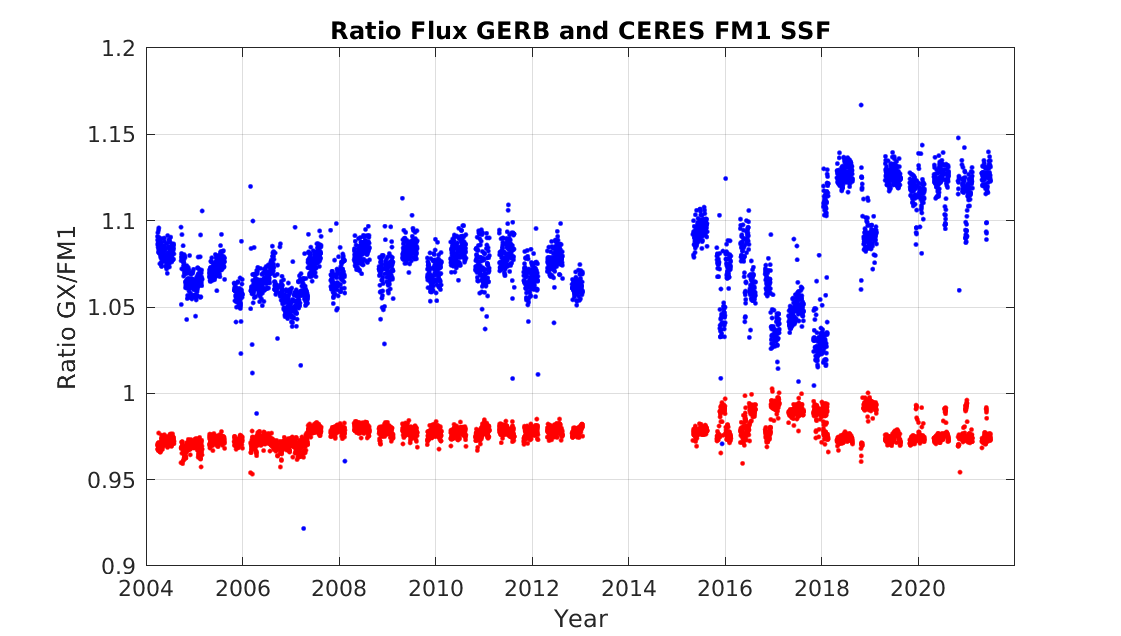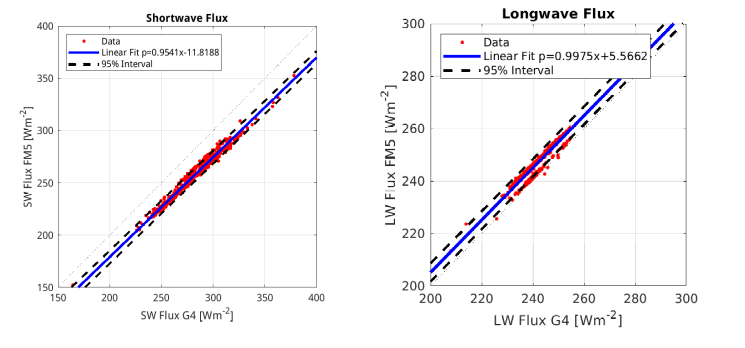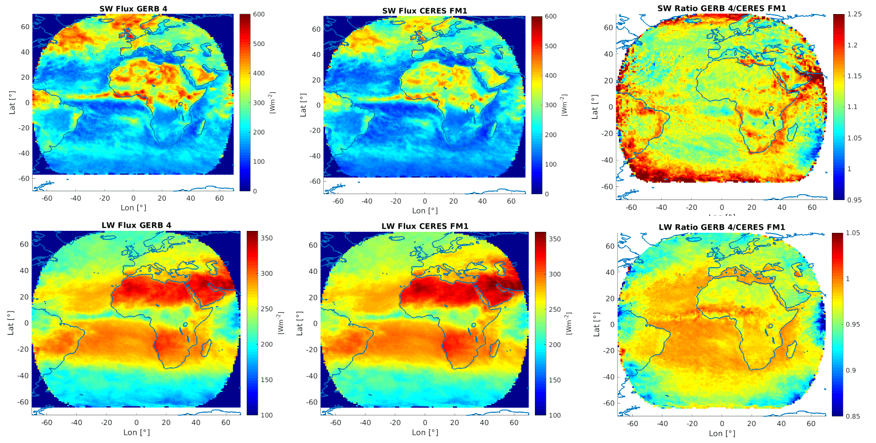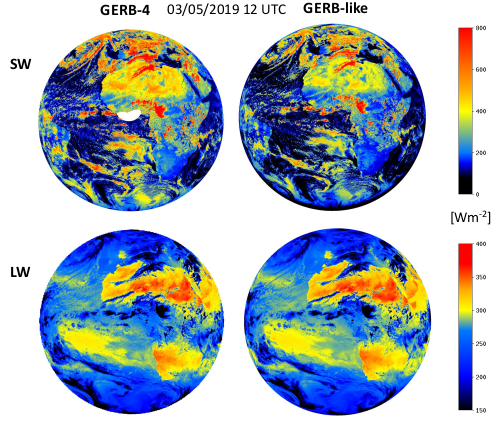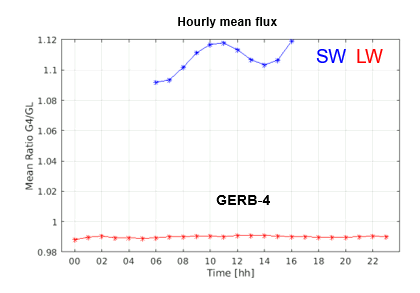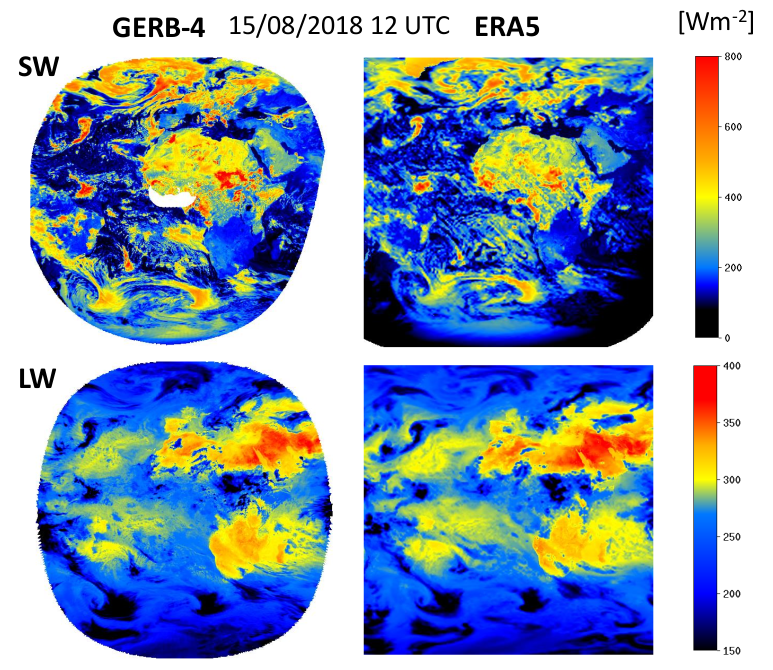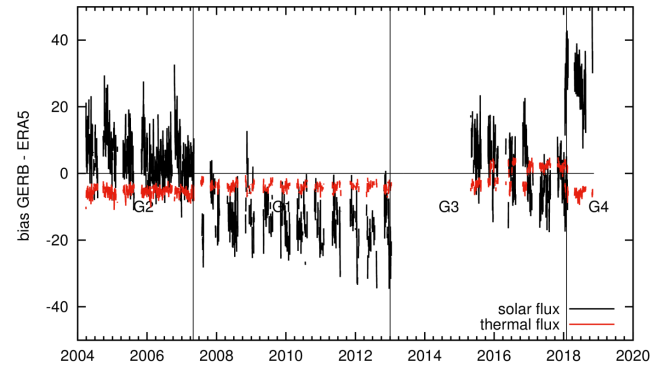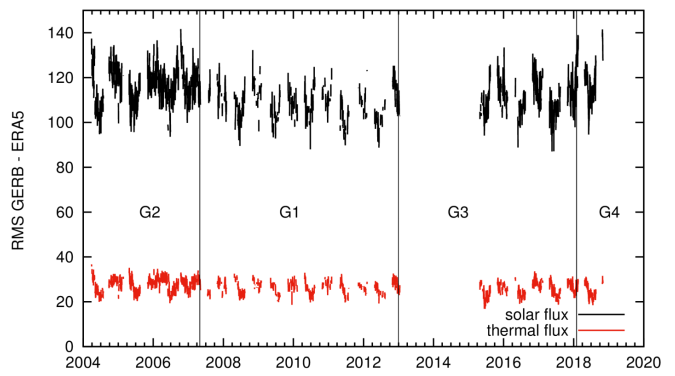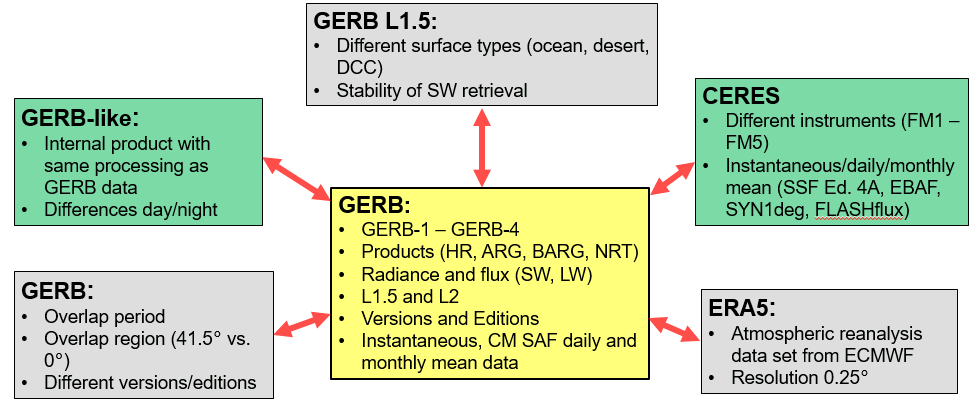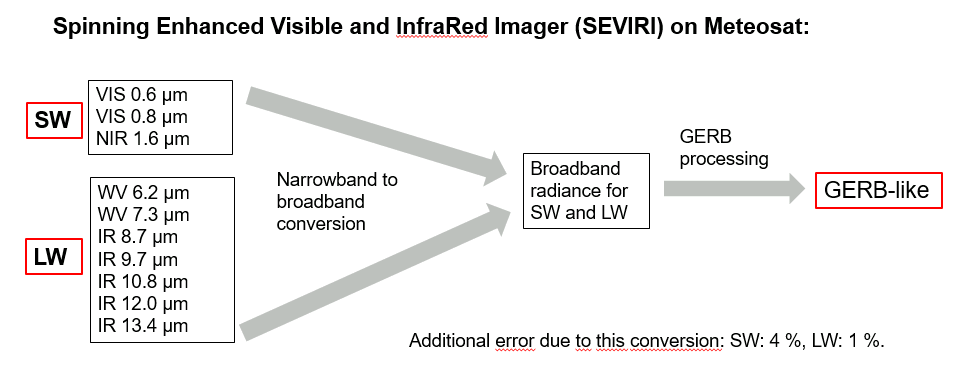- Since 2004, top-of-atmosphere (TOA) broadband reflected solar and emitted thermal radiances and fluxes are provided by the Geostationary Earth Radiation Budget (GERB) instruments (Harries et al., 2005) on board of the Meteosat Second Generation (MSG) satellites.
- The repeat cycle of GERB of 15 minutes allows to resolve the diurnal cycle of the shortwave (SW) and longwave (LW) radiation fluxes at the TOA.
- Location of the operational GERB instrument: Longitude 0° (2004-now) and an additional GERB instrument at longitude 41.5° (2016-now).
- GERB products: NANRG (Nonaveraged, nonrectified, geolocated), ARG (Averaged, rectified, geolocated), BARG (Binned, averaged, rectified, geolocated), HR (High-resolution) in different levels (L1.5, L2, L3), with different spatial (44 km and 9 km) and temporal resolutions (e.g. instantaneous, 15 min bins, monthly mean). All data products are also available in near real-time (NRT).
- Shown are on one hand an overview about the GERB data sets, and on he other hand some preliminary results of a comprehensive analysis and validation of the (so far) 17 years of GERB data. The results of the validation will thereafter be used to better understand and improve the GERB data set itself before releasing a new edition.

Analysis and validation of 17 years of broadband radiation data from the Geostationary Earth Radiation Budget (GERB) instruments

- 1 Royal Meteorological Institute Of Belgium, Brussels
- 2 Imperial College London, London
Abstract
The GERB radiance and flux data sets are validated (i) using products from the Clouds and the Earth's Radiant Energy System (CERES) instruments on the Terra, Aqua and Suomi-NPP satellites, (ii) using an internal product converting narrowband to broadband fluxes from the Spinning Enhanced Visible and InfraRed Imager (SEVIRI) on MSG and (iii) using ERA5 reanalysis data. The first two GERB instruments (2004 – 2012) have already been validated regarding the ageing of the instruments (Parfitt et al., 2016) and its performance in general in comparison to one of the CERES instruments (Clerbaux et al., 2008).
The current study aims at the extension of the validation of the GERB shortwave and longwave radiances and fluxes over the 17 years of data available so far, with focus on the more recent data sets from both, longitude 0° and 41.5° E. For this validation, the newest available editions and versions of GERB and CERES data are used. Preliminary results show an overestimation of the GERB shortwave radiances and fluxes and a slight underestimation of the GERB longwave radiances and fluxes in comparison to the CERES Single Scanner Footprint (SSF) data sets. The comparison of the GERB radiation data with ERA5 data shows a similar pattern. Additional analyses and validations will be presented in more detail.
Bibliography:
Clerbaux, N., Russell, J.E., Dewitte, S., Bertrand, C., Caprion, D., De Paepe, B., Gonzalez Sotelino, L., Ipe, A., Bantges, R. and Brindley, H.E.: Comparison of GERB instantaneous radiance and flux products with CERES Edition-2 data, Remote Sensing of Environment, 113, 102-114, https://doi.org/10.1016/j.rse.2008.08.016, 2008.
Parfitt, R., Russell, J.E., Bantges, R., Clerbaux, N. and Brindley, H.E.: A study of the time evolution of GERB shortwave calibration by comparison with CERES Edition-3A data, Remote Sensing of Environment, 186, 416-427, https://doi.org/10.1016/j.rse.2016.09.005, 2016.
